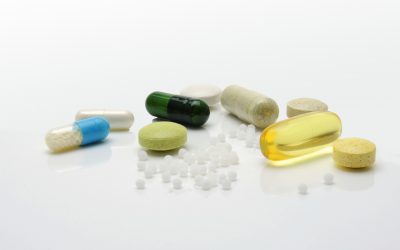The Ins and Outs of Tracking Your Menstrual Cycle
Tracking your menstrual cycle can provide important information about hormonal and reproductive health. Not only does it provide insight into the regularity and length of your cycles, but it also helps to determine whether or not ovulation is occurring. Over time, cycle tracking can help to understand which days of the month you are most fertile. This can be helpful to determine when to have intercourse if trying to conceive, or when not to if trying to avoid pregnancy
The menstrual cycle explained
The menstrual cycle can be split into 4 different phases – Menses, Follicular, Ovulation and Luteal.
The follicular phase begins on day one of your menstrual cycle and lasts until the day of ovulation. During this time, estrogen and progesterone are low and a hormone known as FSH (Follicle Stimulating Hormone) stimulates the development of follicles in the ovaries, which each contain an egg. As these follicles mature, they release estrogen. The mature egg from the most dominant (or largest) follicle is ovulated and released from the ovary. It is then taken into the fallopian tube where it is carried to the uterus.
In the luteal phase (from ovulation to menses) the empty follicle, known as the corpus luteum produces progesterone which prepares the lining of the uterus for pregnancy. If the egg is not fertilized, the corpus luteum degenerates, stops producing progesterone and the uterine lining is shed as a menstrual period. This brings us back to day 1 of the follicular phase.
Can you have a period without ovulating?
Yes. Many people believe that a menstrual period indicates that ovulation has occurred, but unfortunately this is not true. Estrogen is the hormone that develops and thickens the uterine lining in the follicular phase, between your menstrual period and ovulation. There is a threshold that must be reached in order for ovulation to occur. If estrogen increases but does not reach this threshold, the uterine lining will continue to thicken.
One of progesterone’s functions is to maintain the lining of the uterus in preparation for pregnancy. But without ovulation, progesterone is not secreted. The uterine lining cannot be sustained and is shed, looking like a menstrual period even though ovulation did not occur. This can occur in conditions such as PCOS or after coming off the birth control pill.
Ovulation doesn’t always occur on day 14
Many people believe that ovulation occurs on day 14. While this may be true in some cases, it is definitely not true for all. For someone who has cycles that are less than or more than 28 days, ovulation likely falls on a different day of the month. This is important when it comes to conception. If you assume you ovulate on day 14 but you are actually ovulating earlier or later, you may be missing your optimal fertile window. The fertile window is often 5 days before ovulation, the day of ovulation and 12-24 hours after. This is because sperm can survive for 5 days in the female reproductive tract and the egg is only able to be fertilized for one day after being ovulated.
If you are trying to get pregnant, it is important to determine if and when you are ovulating. Cycle tracking is one way to gain more insight into the exact day that ovulation occurs each month.
How do I track my cycle?
Basal Body Temperature
This is a very simple at home tool that can determine if ovulation occurred that month and can help predict when your next menstrual period will occur. After ovulation, your body temperature rises very slightly (between 0.2-0.5°C) and stays elevated in the luteal phase, due to progesterone production. This temperature rise typically occurs 1-2 days AFTER ovulation. Therefore, temperature tracking cannot determine when ovulation will occur, but it can be used to confirm that ovulation already happened. This can be helpful to determine patterns in the menstrual cycle and to help predict the day of ovulation based on several months in a row.
BBT can also be helpful in predicting when the next menstrual period will begin. The luteal phase of the cycle (from ovulation to menses) is fairly constant. It ranges from 12-16 days and often doesn’t vary more than 1-2 days per individual. So, by tracking for several months you can determine the length of your luteal phase and begin to predict the day of your next period. Also, a drop in temperature typically indicates the drop in progesterone that occurs right before the beginning of menstrual flow.
How to track BBT
It is important to do this at the same time every morning, first thing when you wake up– before moving! All you need to do is use a thermometer to record your oral temperature (tip: keep it on your nightstand). We recommend using a basal thermometer that records to 2 decimal points (ex: 36.64 C rather than 36.6 C) because sometimes the temperature shift can be very minimal. You can either record this by hand or use one of many apps including Kindara, Fertility Friend or Clue. Keep in mind that fever, alcohol, sleep deprivation, exercise and inconsistent timing of temperature readings can alter these results.
Cervical Fluid
This method is a better tool than BBT to determine when you are in the most fertile part of your cycle. Cervical fluid is the natural vaginal mucous or “discharge” that occurs throughout the month. Different hormones that control your menstrual cycle affect the consistency, color and amount of cervical fluid present.
Estrogen stimulates the production of this cervical fluid. So, in the first part of the cycle after your period you may not notice a lot of cervical mucous because this is when estrogen is lowest. Several days before ovulation, estrogen peaks and the cervical mucous often becomes sticky or creamy.
During ovulation (or 1-2 days before) the cervical fluid can become slippery and resemble egg-white consistency. This is the most fertile cervical mucous, and if trying to conceive is the best time to have intercourse. One of the purposes of cervical fluid is to protect the sperm and facilitate its movement through the vaginal canal. Slippery or egg-white mucous provides the best environment for sperm protection and movement, so it can more easily travel through the vaginal canal to meet the egg. After ovulation, this mucous become thicker and chances of conception begin to decline again.
Why is it best to combine BBT and Cervical Fluid Tracking?
It is often recommended to track both BBT and cervical fluid together. As estrogen increases, the cervical fluid can become more slippery and of fertile quality. But without a temperature shift, ovulation has not occurred. Also, because the rise in temperature occurs 1-2 days AFTER ovulation by using BBT alone you may miss your fertile window each month.
LH Strips or Ovulation Predictor Kits
LH strips, or OPKs detect luteinizing hormone (LH) in the urine. About 36 hours before ovulation, LH spikes in order to fully mature the developing egg. With a positive LH test, it is best to have intercourse that day and the day after if trying to conceive.
Some newer tests can detect the presence of LH and estrogen in the urine. Because estrogen peaks before LH, this provides more warning that ovulation is approaching. Since the fertile window begins around 5 days before ovulation, tests that detect estrogen provide a wider window to focus on intercourse if fertilization is desired.
Menses (Your Period)
Tracking the days that you are on your period can help to gain information around length of flow, how heavy it is, if there is any spotting, clotting or premenstrual symptoms experienced. This can help to determine hormonal relationships and whether or not further testing or support is indicated.
The length of your cycle is determined by the number of days between menstrual periods. Cycles that are <21 days in length or >35 days may indicate a need for further hormone testing. Tracking your cycle allows you to remain empowered about your health. You can start to understand patterns and inconsistencies in your cycle that may be affecting your reproductive health. Additionally, this can help you determine if ovulation is occurring and when your optimal fertile window is to help promote or avoid conception.
Need more support?
If you are experiencing irregular menstrual cycles, premenstrual symptoms, anovulation that are causing difficulties conceiving, I can help to investigate your cycles further and provide support for restoring balance to improve your fertility.
With love and in health,
Priya
References
I want to help you get there. The key to your fertility lies within you.
Let's Awaken it!
More Reading
Naturopathic Medicine in Fertility
Whether you are just starting to try to get pregnant, struggling with getting pregnant or suffering from recurrent miscarriages, a fertility naturopathic doctor can help you along your fertility journey. Naturopathic doctors are trained healthcare professionals with...
The Role of Melatonin in Fertility
Most of us have heard about melatonin in the context of sleep, as a supplement that can impact our circadian rhythm. However, this hormone also plays an important role in female fertility. What is Melatonin? Melatonin is a hormone made by the pineal gland in...
Simple Tips to Improve Your Chances of Conceiving
It’s easy to get caught up in the minor details of what we could be doing better when trying to get pregnant. This can lead to constant thoughts around the effects that our daily activities have on our chances. This self-criticism can feel overwhelming and...




Share This
Share this post with your friends!